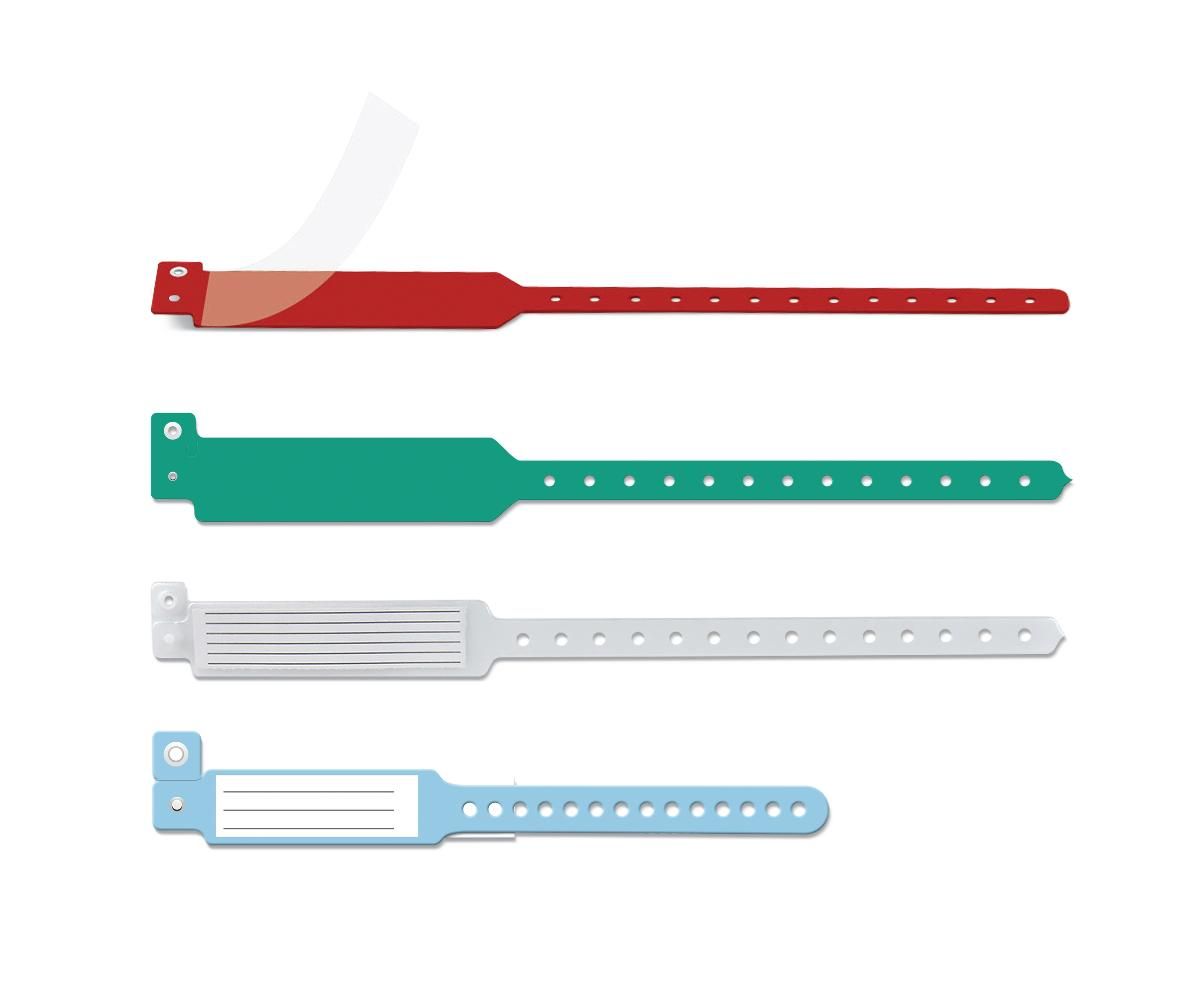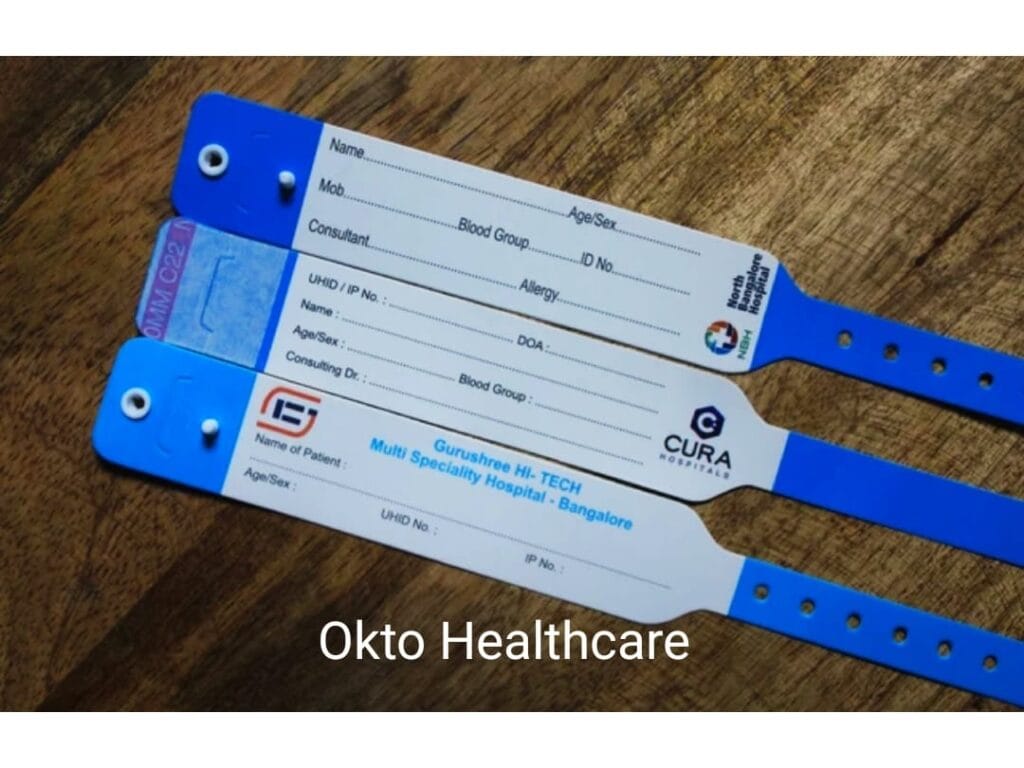Making Sure Specific Medicine Administration with Patient Identification Band
Making Sure Specific Medicine Administration with Patient Identification Band
Blog Article
Enhancing Safety: The Value of Client Recognition Bands in Healthcare
In the realm of healthcare, the effectiveness of patient identification bands can not be overstated, as they serve as an essential secure against misidentification and subsequent errors. As we explore the multifaceted role of these bands, it ends up being obvious that their relevance expands past simple identification, increasing questions regarding best practices and future innovations in patient safety and security.
Review of Individual Recognition Bands
Individual identification bands play a vital function in guaranteeing the safety and precision of individual care in medical care setups. These bands, normally worn on the wrist or ankle joint, act as a crucial tool for confirming person identification, thus minimizing the risk of mistakes in treatment, medication administration, and various other health care treatments. Made from long lasting materials, client recognition bands usually include important details such as the individual's name, date of birth, medical record number, and barcodes or QR codes for scanning.
The implementation of person recognition bands is vital in different health care environments, including health centers, outpatient centers, and long-term treatment institutions. They add to a methodical strategy in client monitoring, enabling medical care professionals to promptly and accurately determine patients, particularly in high-pressure scenarios where swift decision-making is necessary.
Furthermore, making use of these bands is straightened with regulatory standards aimed at improving individual safety and security - Patient Identification Band. By ensuring that each client's info is easily obtainable and conveniently proven, doctor can keep a high standard of care, reduce the occurrence of adverse occasions, and cultivate a society of security within medical care establishments
Advantages of Accurate Recognition
Precise identification is essential to enhancing person safety and security and care top quality in medical care settings. It works as the initial line of protection versus errors that could result in adverse patient end results. By making certain that each individual is properly identified via trusted methods, such as individual identification bands, healthcare service providers can considerably minimize the threat of misidentification, which can lead to unsuitable treatments, drug errors, and also medical mix-ups.
Furthermore, exact individual identification promotes reliable communication amongst health care groups. When all personnel participants can constantly recognize people, they can share important info extra effectively, causing much better control of treatment. This is especially important in emergency situation situations where prompt treatments are important.
Additionally, precise recognition supports conformity with regulatory requirements, therefore decreasing the risk of legal effects for healthcare facilities. It cultivates trust between people and doctor, as individuals really feel more safe recognizing that their identities are being protected.

Usual Challenges Encountered
Guaranteeing reliable client recognition in healthcare settings offers a variety of challenges that can endanger safety and care high quality. People may show up in a state of complication or distress, making exact identification hard.
An additional difficulty is the dependence on human factors in identification treatments. Medical care professionals may accidentally misunderstand or overlook identification procedures, specifically in high-stress settings such as emergency departments. This can result in mistakes, consisting of the administration of incorrect treatments or medicines.
Technical concerns additionally pose difficulties. Digital wellness document (EHR) systems are made to enhance person identification, system outages or individual mistakes can interfere with the procedure. The physical style of client ID bands can lead to readability problems, especially in cases where bands are harmed or covered.
Last but not least, irregular training amongst team visit regarding recognition procedures can lead to gaps in knowledge and technique. Resolving these difficulties is critical for boosting person safety and security and making sure that identification bands serve their desired function efficiently.
Best Practices for Execution
To efficiently apply client recognition bands in healthcare setups, companies need to adopt a complex technique that prioritizes standardization, training, and technology assimilation. Standardization includes developing clear procedures for the design, application, and usage of identification bands throughout all departments. This makes sure uniformity and reduces the risk of errors connected to variations in band kinds or labeling approaches.


Training is essential for all medical care team to ensure they understand the relevance of precise patient recognition, exactly how to appropriately check out and apply recognition bands, and the procedures to adhere to in case of disparities. Routine workshops and correspondence course can strengthen this knowledge and advertise a culture of security.
Technology assimilation plays a critical duty in enhancing the performance of client recognition bands. Using barcode scanning or RFID modern technology can improve the recognition process, enabling for real-time confirmation of client identifications. Additionally, digital health record systems need to be configured to include signals for like it mismatches in between the recognition band and patient data.
Future Trends in Person Safety
As medical care continues to develop, the focus on patient safety is most likely to intensify, driven by improvements in modern technology and a greater understanding of systemic dangers. Arising fads indicate a shift in the direction of even more incorporated systems that leverage data analytics, expert system, and artificial intelligence to improve client identification processes. These innovations can assist recognize possible safety issues before they intensify, therefore lowering mistakes linked with misidentification.
Moreover, the implementation of blockchain technology may transform just how patient information is firmly shared amongst medical care suppliers, making certain that recognition bands are consistently exact and current. This will certainly not only improve client safety but also facilitate smooth interaction across multidisciplinary teams.

On top of that, the growing concentrate on tailored medication is expected to influence client security methods. By integrating group and hereditary information right into identification systems, medical care specialists can customize treatments better, decreasing the risks of negative reactions because of misidentification.
Verdict
Finally, individual recognition bands act as a crucial element in enhancing safety within medical care environments. By facilitating precise individual recognition, these bands substantially minimize the danger of mistakes connected with misidentification, improper treatments, and drug management. Regardless of obstacles in execution, adherence to finest methods and the integration of emerging technologies can better boost their efficiency. Eventually, article the continued focus on durable recognition protocols will certainly add to better individual outcomes and total safety and security in health care settings.
In the realm of health care, the efficacy of person identification bands can not be overemphasized, as they serve as a basic secure against misidentification and succeeding errors.Individual identification bands play a crucial function in ensuring the safety and security and accuracy of individual treatment in health care settings. Made from sturdy materials, individual identification bands typically consist of important details such as the patient's name, day of birth, clinical record number, and barcodes or QR codes for scanning.
By making sure that each patient is appropriately identified with reliable ways, such as individual recognition bands, healthcare carriers can considerably lessen the threat of misidentification, which can lead to improper therapies, medication mistakes, and even surgical mix-ups.
In final thought, individual recognition bands offer as a vital element in improving safety and security within medical care environments. Patient Identification Band.
Report this page